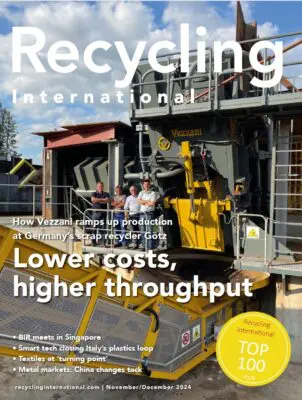MESSAGE FROM MUMBAI
69recyclinginternational.com | November/December | 2024
It is 10pm on a Sunday night and we are about to
retire after a long, social day. Suddenly, my daughter
knocks on the door to say the ink cartridge in her
printer has run out. She has to submit a school project
the next morning and needs some print outs urgently.
We log on to a hyper delivery app and within 12 min-
utes the required print outs are dropped off at our
home. My daughter goes to sleep peacefully, well
prepared for school presentation in the morning.
Welcome to the ecosystem of hyper deliveries. Be it
packaged food, clothes, medicine, electronics, statio-
neries, cosmetics or just about any consumer product
that you can think of. There are half-a-dozen apps
serving Mumbai which deliver all of these things on
your doorstep within ten minutes.
CRISS-CROSSING CITIES
I recently wanted to buy high-quality earphones for
my morning runs. They cost about US$ 400 a pair and
I was surprised that a hyper delivery app could deliver
them so quickly. Especially as we are in a super-crowd-
ed city with an average traffic speed of 20 km per
hour. If you are wondering how these hyper delivery
agents can get to you in ten minutes, then you need
to check out their new electric bikes and scooters,
which pack a bazooka. They zip-zap across our major
cities and their congested traffic lanes putting pro-
posed hyperloop high-speed transportation systems
and other ‘supersonic’ carriers to shame.
GIGA LITHIUM CELL FACTORY
Whether it’s electric two-wheelers or cars or buses,
the EV revolution is hard to miss. Allocated distinctive
green licence plates under the national registration
system, these vehicles stand out from the rest. Each
month, India sells around 35 000 electric two-wheel-
ers. The biggest manufacturer – the biggest in the
world, in fact – is building a giga factory to produce its
own lithium-ion battery cells. India’s cumulative sales
of electric vehicles exceeded 4.1 million by March
2024. About 1.7 million had been sold in the preced-
ing 12 months, which is an 80% increase year-on-year.
GOVERNMENT SUPPORT
The Government is aggressively pushing further pene-
tration of electric vehicles (EVs) through policy, fiscal
and infrastructure support. Incentives such as waiving
registration fees and lower goods and services tax
rates or schemes such as the Faster Adoption and
Manufacturing of Electric (and hybrid) vehicles, and
the Production Linked Incentive have acted as catalyst
for the faster adoption of EVs. Ministers want an over-
all penetration of 30% by 2030 and officials are work-
ing overtime to secure the required infrastructure sup-
port, specially related to charging.
Call it evolution or revolution, Indian manufacturers
and consumers are hyper-charged for now. I forgot to
mention that we had a party at my place the weekend
before but we ran out of ice at 2am. Ten minutes later,
we were chilling out again. Thanks to a hyper delivery
by an electric two-wheeler. Cool!
Dhawal Shah
From his home and work base in Mumbai, non-ferrous scrap
trader Dhawal Shah of Metco Ventures shares his thoughts on
how India is becoming the world’s new recycling frontier.
Hyper
‘EV’olution!
69_columndhawalshah.indd 69 19-11-2024 15:12




